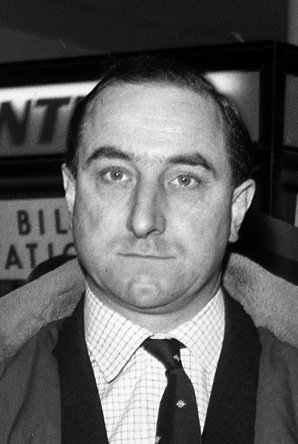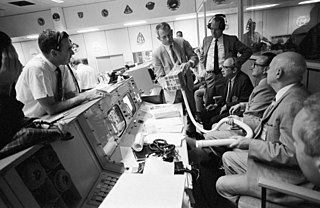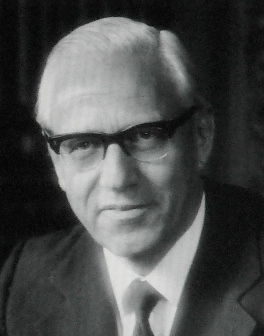
Concorde is a retired Anglo-French supersonic airliner jointly developed and manufactured by Sud Aviation and the British Aircraft Corporation (BAC). Studies started in 1954, and France and the UK signed a treaty establishing the development project on 29 November 1962, as the programme cost was estimated at £70 million . Construction of the six prototypes began in February 1965, and the first flight took off from Toulouse on 2 March 1969. The market was predicted for 350 aircraft, and the manufacturers received up to 100 option orders from many major airlines. On 9 October 1975, it received its French Certificate of Airworthiness, and from the UK CAA on 5 December.

The Whitcomb area rule, named after NACA engineer Richard Whitcomb and also called the transonic area rule, is a design procedure used to reduce an aircraft's drag at transonic speeds which occur between about Mach 0.75 and 1.2. For supersonic speeds a different procedure called the supersonic area rule, developed by NACA aerodynamicist Robert Jones, is used.

The British Aircraft Corporation (BAC) was a British aircraft manufacturer formed from the government-pressured merger of English Electric Aviation Ltd., Vickers-Armstrongs (Aircraft), the Bristol Aeroplane Company and Hunting Aircraft in 1960. Bristol, English Electric and Vickers became "parents" of BAC with shareholdings of 20%, 40% and 40% respectively. BAC in turn acquired the share capital of their aviation interests and 70% of Hunting Aircraft several months later.

Filton Airport or Filton Aerodrome was a private airport in Filton and Patchway, within South Gloucestershire, 4 NM north of Bristol, England.
Dietrich Küchemann CBE FRS FRAeS was a German aerodynamicist who made several important contributions to the advancement of high-speed flight. He spent most of his career in the UK, where he is best known for his work on Concorde.

Ernest Brian Trubshaw, CBE, MVO was a leading test pilot, and the first British pilot to fly Concorde, in April 1969.
Ronald Frederick Ayers was an English engineer who was responsible for the aerodynamics of the land speed record-holding vehicles, ThrustSSC and JCB Dieselmax, and was Chief Aerodynamicist for the Bloodhound SSC.
Sir George Robert Freeman Edwards, was a British aircraft designer and industrialist.
Sir Archibald Russell, CBE, FRS was a British aerospace engineer who worked most of his career at the Bristol Aeroplane Company, before becoming managing director of the Filton Division when Bristol merged into British Aircraft Corporation in 1960. He also served as the vice-chairman of the BAC-Sud Aviation Concorde Committee that produced the Concorde, working alongside Morien Morgan. His designs include the Blenheim, Britannia, Type 188 and many others. He was known throughout his career as a perfectionist, as well as his criticism for those who did not measure up – criticisms that included ministers, civil servants, the Brabazon Committee and BOAC.

Aerospace engineering is the primary field of engineering concerned with the development of aircraft and spacecraft. It has two major and overlapping branches: aeronautical engineering and astronautical engineering. Avionics engineering is similar, but deals with the electronics side of aerospace engineering.
William John Strang, CBE, FRS, FREng, FRAeS was a British aerospace engineer, known for his contributions to the design of a number of British aircraft, including Concorde.
David J. Farrar was an English engineer who led the Bristol team that developed the Bristol Bloodhound surface-to-air missile, which defended Britain's nuclear deterrent for many years and was widely sold abroad. His main achievements in cost engineering were confidential until 2000. He saved two companies from bankruptcy, achieved cost reductions of over £1 million, and trained engineers in cost engineering. His methods are the basis of a major Australian product cost reduction initiative.

Sir Frederick William Page was an English aircraft designer and manager. He had large involvements with two British aircraft projects - the English Electric Lightning and the BAC TSR.2. Arguably, the sum total of his contribution to the British aerospace community over a period of 45 years until his retirement in 1983 was greater than that of any other individual.
John William Fozard, was a British aeronautical engineer who helped to design the Hawker Siddeley Harrier.
Sir Robert Lang Lickley was a Scottish aeronautical engineer, and Chief Engineer at Fairey Aviation during whose tenure the Fairey Delta 2 became the first aircraft to exceed 1,000 mph.

Raymond Frederick ''Ray'' Creasey OBE was a British aerodynamicist with British Aircraft Corporation from 1948 until his death in 1976. He was responsible for the aerodynamics of the Lightning interceptor aircraft.
Donald Dykins FRAeS was a British aerodynamicist.
John Roy Ewans FRAeS was a British aerodynamicist, and the former chief designer of the Manchester-based aircraft company Avro.
Robert Murray McKinlay CBE FREng FRAeS is a Scottish businessman, a former chief executive of British Aerospace.
Jean Rech was a French aerodynamicist, and the chief aerodynamicist for Concorde, on the French division.







